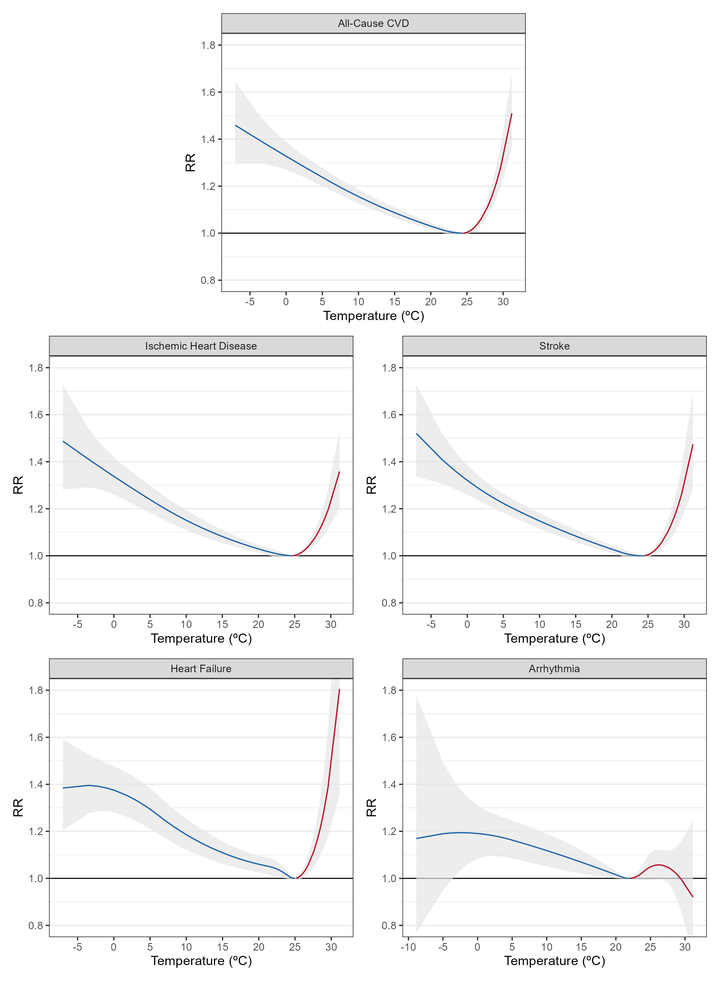Associations Between Extreme Temperatures and Cardiovascular Cause-Specific Mortality: Results From 27 Countries

Abstract
Background: Cardiovascular disease is the leading cause of death worldwide. Existing studies on the association between temperatures and cardiovascular deaths have been limited in geographic zones and have generally considered associations with total cardiovascular deaths rather than cause-specific cardiovascular deaths. Methods: We used unified data collection protocols within the Multi-Country Multi-City Collaborative Network to assemble a database of daily counts of specific cardiovascular causes of death from 567 cities in 27 countries across 5 continents in overlapping periods ranging from 1979 to 2019. City-specific daily ambient temperatures were obtained from weather stations and climate reanalysis models. To investigate cardiovascular mortality associations with extreme hot and cold temperatures, we fit case-crossover models in each city and then used a mixed-effects meta-analytic framework to pool individual city estimates. Extreme temperature percentiles were compared with the minimum mortality temperature in each location. Excess deaths were calculated for a range of extreme temperature days. Results: The analyses included deaths from any cardiovascular cause (32 154 935), ischemic heart disease (11 745 880), stroke (9 351 312), heart failure (3 673 723), and arrhythmia (670 859). At extreme temperature percentiles, heat (99th percentile) and cold (1st percentile) were associated with higher risk of dying from any cardiovascular cause, ischemic heart disease, stroke, and heart failure as compared to the minimum mortality temperature, which is the temperature associated with least mortality. Across a range of extreme temperatures, hot days (above 97.5th percentile) and cold days (below 2.5th percentile) accounted for 2.2 (95% empirical CI [eCI], 2.1–2.3) and 9.1 (95% eCI, 8.9–9.2) excess deaths for every 1000 cardiovascular deaths, respectively. Heart failure was associated with the highest excess deaths proportion from extreme hot and cold days with 2.6 (95% eCI, 2.4–2.8) and 12.8 (95% eCI, 12.2–13.1) for every 1000 heart failure deaths, respectively. Conclusions: Across a large, multinational sample, exposure to extreme hot and cold temperatures was associated with a greater risk of mortality from multiple common cardiovascular conditions. The intersections between extreme temperatures and cardiovascular health need to be thoroughly characterized in the present day—and especially under a changing climate.